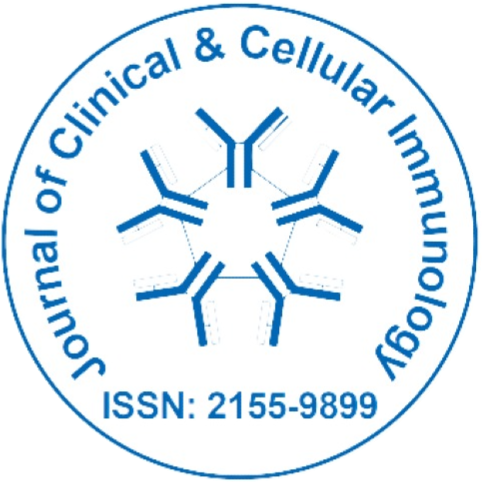
Journal of Clinical and Cellular Immunology
Open Access
ISSN: 2155-9899

ISSN: 2155-9899
Goksal Keskin, Mehmet Emin Enecik, Dilek Keskin and Mehmet Yıldız
Posters: J Clin Cell Immunol
Background: Beh�et?s disease (BD) is a multisystem inflammatory disease, characterized by recurrent uveitis, oral aphthous lesions, genital ulceration, skin lesions and joints involvement. In BD, increased release of proinflammatory cytokines and peptide hormones may play a role in inflammatory stages of the disease. In recent years, it is also known that some proteins originated from adipose tissue play important roles in inflammatory process. One of them, visfatin decreases expression of adhesion molecules and inhibits attachment of active macrophages to endothelial surface, so that it acts anti-inflammatory effect. We aimed to search the relation among levels of visfatin with activity of BD, which is an adipokin released from adipose tissue. Methods: 60 patients with BD (32 female, 28 male) and 20 healthy controls (11 female, 9 male; mean age 38.8 � 8.8 years) were enrolled in this study. Thirty patients were in active stage (mean age; 41.6 � 7.7 years, median disease duration 7 years) and 30 patients were in inactive stage (mean age;41.1 � 11.8 years, median disease duration; 7 years). Serum visfatin levels were determined by ELISA. Results: The median serum visfatin levels were 2.96 ng/ml in healthy controls, 103.82 ng/ml in active BD patients and 84.01 ng/ ml in inactive BD patients. Serum visfatin levels in patients with BD were significantly higher than in healthy controls (p<0.001). Serum visfatin levels were significantly high in active BD patients compared with in inactive BD patients(p<0.001). In active and inactive patients with BD, there are statistically significant correlation between visfatin and CRP (r=0.754, p <0.001, r=0.722, p <0.001 respectively). Conclusion: Serum visfatin levels are high during both active and inactive stage in patients with BD. Therefore, it may play an important role in the pathophysiology of BD. The high serum visfatin levels in inactive Beh�et?s patients show us the continuous activation of the disease even in the subclinical period.